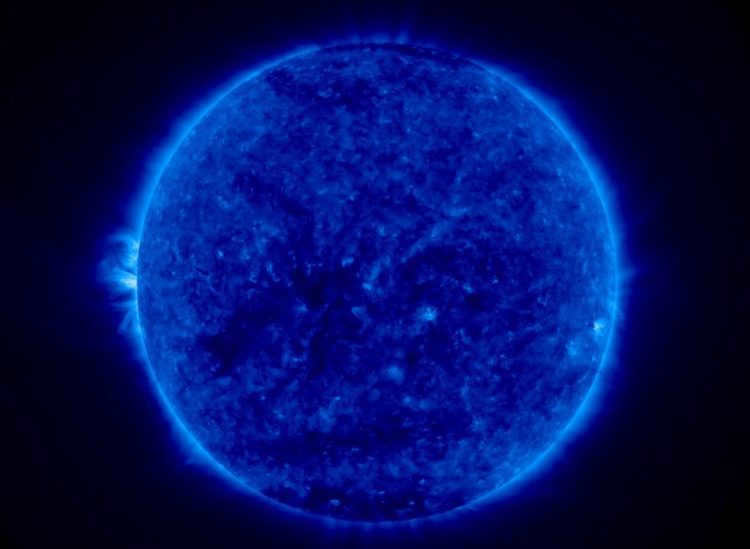
- Stars
Stars’ Color Origins
The color of stars is determined by the temperature on their surfaces. The surface temperature of our sun is over 6,000 Kelvin. While it appears yellow when viewed from Earth, it actually appears as a dazzling white when seen from space. This bright white glow is a result of the sun’s high temperature. If the sun were cooler, its light would have a darker hue, closer to red. Conversely, if it were hotter, the light would appear blue.
The diverse colors of stars have become an invaluable tool for astronomers as they can determine the surface temperature of stars based on their color. This is due to the fascinating relationship between the energy of matter and the color of the light it emits.
You may have already noticed this phenomenon yourself. The filament of low-power 30-watt bulbs emits an orange glow, but when the voltage drops, the filament only emits a faint red glow. Stronger bulbs emit a yellow or even white glow. Similarly, a welding electrode and a quartz lamp emit a blue glow during operation. However, it is important to never look directly at them, as their high energy can cause damage to the retina.
Therefore, the color of an object’s glow is determined by its temperature – the hotter the object, the closer its glow color is to blue, and the colder the object, the closer its glow color is to dark red. This principle also applies to stars. The composition of a star has a minimal impact on its color, as the temperature can ionize certain elements and obscure their presence.
However, it is through the examination of a star’s radiation’s color spectrum that we are able to deduce its composition. Each substance’s atoms possess their own distinct range of wavelengths. Certain colors of light are able to pass through unhindered, while others are blocked – it is precisely within these blocked ranges that scientists can identify the chemical elements present.
The process of “coloring” stars
What is the scientific explanation behind this phenomenon? The temperature of a star is directly related to the movement of its molecules – the higher the temperature, the faster they move. This movement affects the length of light waves that pass through the star. A hot star will shorten the waves, while a cold star will lengthen them. The visible color of the star is determined by the wavelength of light it emits: short wavelengths create blue shades, while long wavelengths create red shades. White light is produced when multiple wavelengths overlap.
Classes of stars
The Galaxy is home to seven distinct classes of stars:
- Class O stars. These stars are characterized by their blue color and extremely high temperatures. They have the shortest lifespan among all stars, lasting less than 1 million years. In the Galaxy, there are approximately 100 million class “O” stars, many of which have habitable planets orbiting them. One example of a class “O” star is Garnibus.
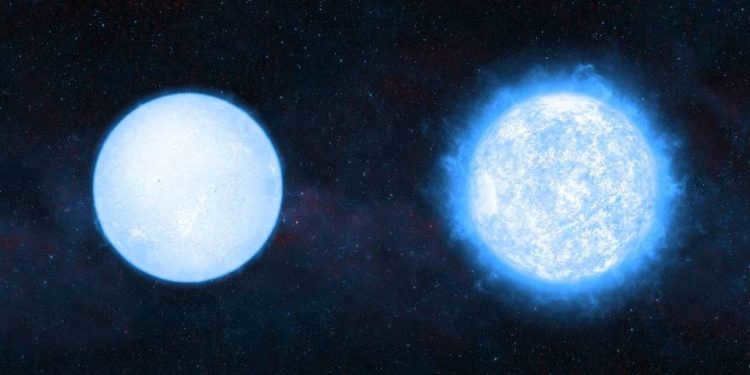
- Blue-white stars known as Class B stars were extremely hot and had an average lifespan of about 10 million years. The Galaxy was home to approximately 100 million Class B stars, many of which had habitable planets orbiting them. For instance, there was a star called Kessa.
- Class A stars, which were white in color, were also quite hot. They had lifespans ranging from 400 million to 2 billion years. In the Galaxy, there were about 100 million Class A stars with habitable planets revolving around them. One such star was Colu.
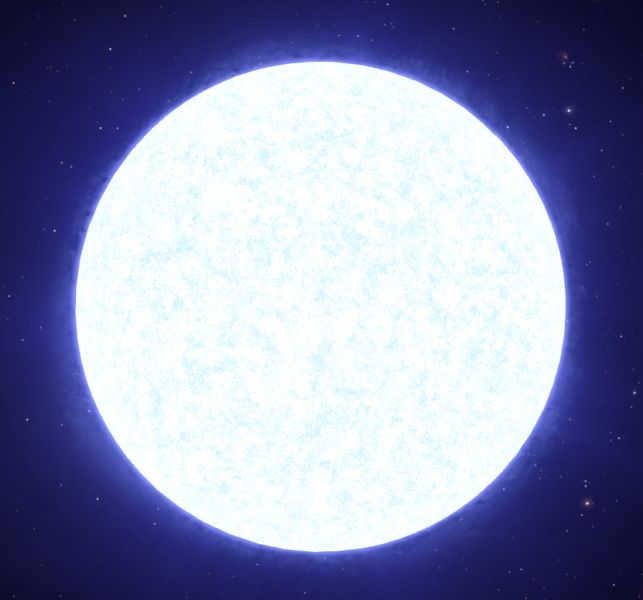
- F-type stars. These stars have a yellow-white color and possess average temperatures. Their lifespan is estimated to be around 4 billion years. In our galaxy, there are approximately 100 million F-type stars that host habitable planets. One example of such a star is Ropagi.
- G-type stars. These stars have a yellow color and also exhibit average temperatures. They have a longer lifespan, estimated to be around 10 billion years. In our galaxy, there are approximately 2 billion G-type stars with habitable planets in their orbit. One example of such a star is Corellus.
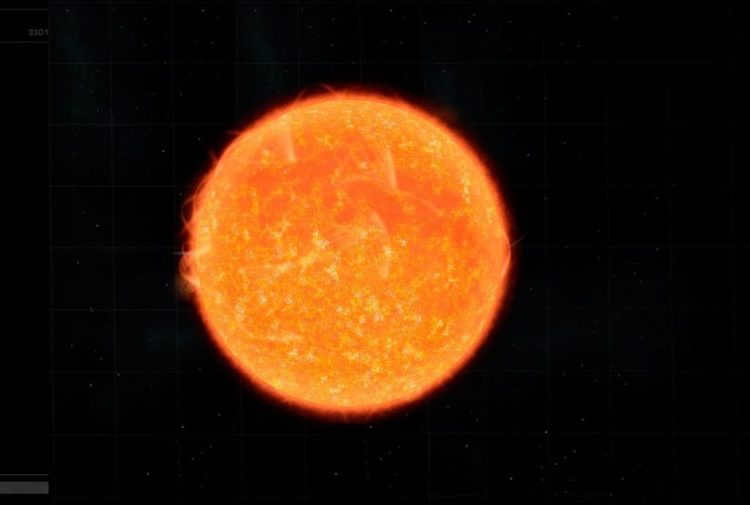
- Stars of the K class. These stars had an orange color and had temperatures low enough for them to be considered stars. On average, they had a lifespan of about 60 billion years. In the Galaxy, there were around 3.75 billion K-class stars, some of which had habitable planets orbiting them. For example, Yavin.
- Stars of the M class. These stars were red in color and were cooler compared to other stars. They were also known as red dwarfs. On average, they had a lifespan of about 100 trillion years. In the Galaxy, there were approximately 700 million M-class stars with habitable planets orbiting them. For example, Barab.
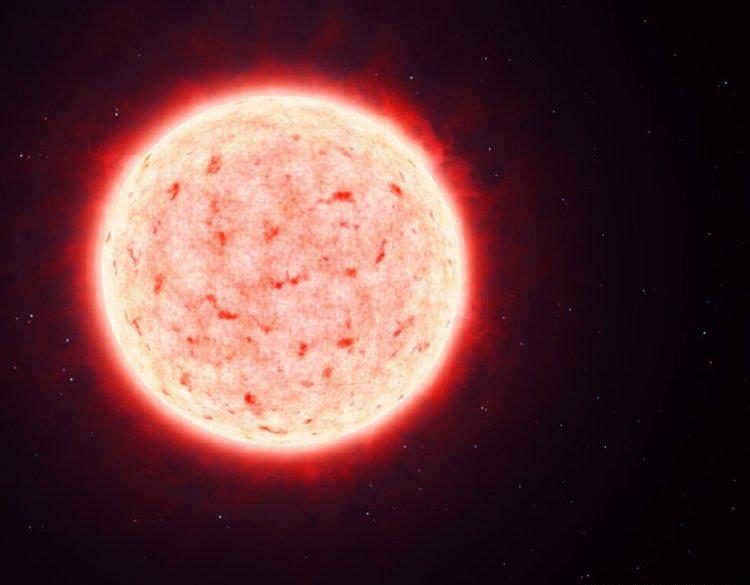
The size of a star was also determined by its classification. The largest stars were the blue hot “O” class stars. As the temperature of the star decreased, so did its size. Conversely, the smallest stars were the red “M” stars. Additionally, approximately 10 percent of the stars in the Galaxy did not fit into this classification, and there were 500 million of them that had planets capable of supporting life orbiting around them.
A gigantic blue star
Gigantic blue stars are among the most massive and brightest celestial objects. They surpass the size of giants, yet fall short of the colossal hypergiants. The customary mass of gigantic blue stars ranges from 15 to 50 times that of the Sun. In the field of astronomy, they are commonly referred to as OB-type supergiants. They belong to the luminosity class I and have a spectral class of B9 or above. Positioned in the upper left section of the Hertzsprung-Russell diagram, on the right side of the main sequence, they exhibit surface temperatures ranging from 10,000 to 50,000 K, as well as luminosities ranging from 10,000 to 1,000,000 times that of the Sun. The average lifespan of stars of this kind is estimated to be around 5 to 10 million years.
Distinctive Features
Due to their considerable mass, blue supergiants possess relatively brief lifespans and are primarily observed in youthful celestial structures such as dispersed clusters, arms of spiral galaxies, and irregular galaxies. They are rarely seen in the cores of spiral galaxies, elliptical galaxies, and globular clusters, which primarily consist of aged entities.
Despite their scarcity and limited lifespans, numerous blue supergiants are visible in the night sky due to their high luminosity. Among the most notable supergiants is Rigel, the brightest star in the Orion constellation – its mass is nearly 20 times that of the Sun, and its luminosity is almost 120,000 times greater than that of the Sun.
Blue supergiants are distinguished by a powerful stellar wind and typically exhibit emission lines in their spectra.
The swift but rarefied stellar wind originates from blue supergiants, in contrast to the sluggish yet dense wind emitted by red supergiants. When a red supergiant evolves into a blue supergiant, the faster wind catches up with the previously emitted slower wind, resulting in a collision that compresses the ejected material into a slender shell. Conversely, it is also possible for a blue supergiant to transform into a red supergiant. In certain instances, multiple concentric faint thin shells may be observed, which are formed by successive episodes of mass loss caused by several cycles of red-blue supergiants.
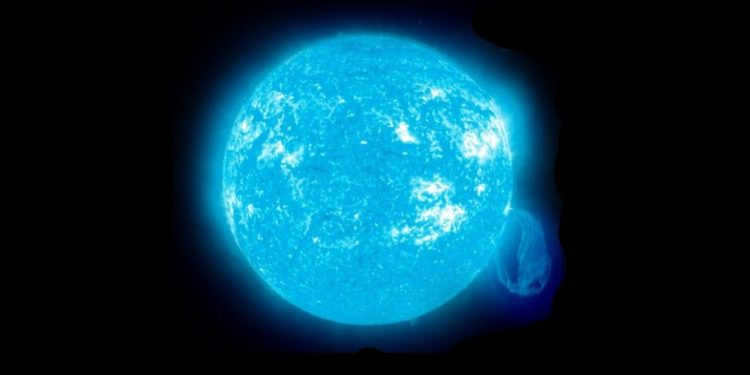
Transformation of supergiants
Supergiants, known as massive stars in a particular stage of their life cycle, undergo transformations. During this phase, the core’s thermonuclear reactions decrease, causing the star to compress. This compression results in a reduction of the star’s surface area, leading to an increase in energy density and surface heating. This compression process can transform a red supergiant into a blue supergiant. Conversely, a blue supergiant can also undergo a reverse process and become a red supergiant.
Although the wind from a red supergiant is dense and slow, the wind from a blue supergiant is fast but less dense. When the compression transforms a red supergiant into a blue supergiant, the faster wind clashes with the previously emitted slow wind, resulting in the formation of a thin shell from the ejected material. The presence of a similar envelope in almost all observed blue supergiants confirms that they were once red supergiants.
During the evolution of a star, it has the ability to undergo multiple transformations, transitioning from a red supergiant with a slow and dense wind, to a blue supergiant with a fast and rarefied wind, and vice versa. These transformations result in the formation of concentric weak envelopes around the star. In an intermediate phase, the star may exhibit a yellow or white color, similar to the famous star Polaris. Typically, a massive star will conclude its life with a powerful supernova explosion. However, there exists a small subset of stars, ranging in mass from eight to twelve solar masses, that do not explode but instead continue to evolve and ultimately become oxygen-neon white dwarfs. The process by which these white dwarfs form from stars that would typically end with a supernova explosion is still not fully understood. It remains a mystery as to why this occurs. It is worth noting that both blue and red supergiants have the potential to evolve into a supernova.
Due to the fact that red supergiants are frequently in the form of massive stars, there is a greater number of red supergiants that we observe compared to blue supergiants. As a result, the majority of supernovae are believed to come from red supergiants. Previously, astrophysicists had assumed that all supernovae originated from red supergiants, however, the formation of supernova SN 1987A from a blue supergiant disproved this assumption. This particular event also prompted a reevaluation of certain aspects of stellar evolution theory.
Rigel
Rigel is a blue supergiant star located in the constellation of Orion. It is one of the brightest stars in the night sky and is easily visible to the naked eye. Rigel has a mass about 17 times that of the Sun and is estimated to be around 8 million years old. It is also one of the most luminous stars known, with a luminosity over 120,000 times that of the Sun. Rigel is believed to be a binary star system, with a smaller companion star orbiting around it. The exact nature of this companion star is still uncertain, but it is thought to be either a white dwarf or a main sequence star. Rigel is also a source of X-ray emission, which is thought to be caused by its strong stellar wind interacting with the interstellar medium. Overall, Rigel is a fascinating and important star in the study of stellar evolution and astrophysics.
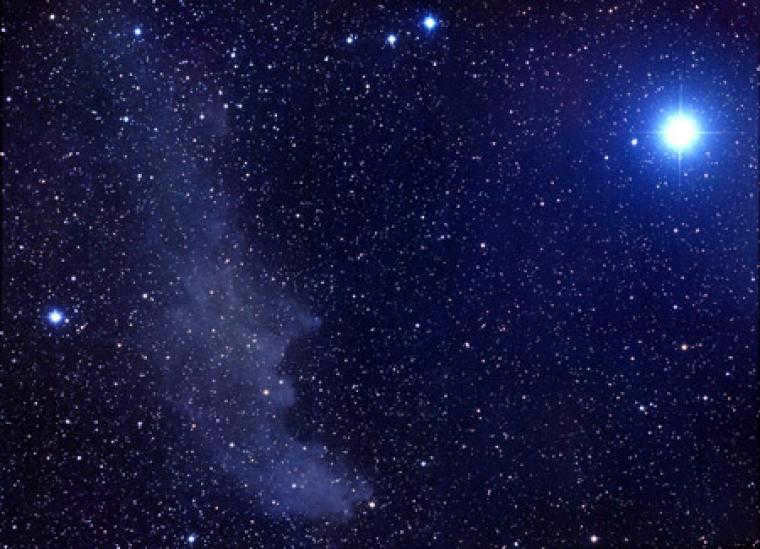
A well-known example is Rigel (Orion’s beta), the most brilliant star in the Orion constellation. It has a mass approximately 20 times greater than that of the Sun and a luminosity around 130,000 times higher than the Sun. This makes Rigel one of the most potent stars in the Galaxy, especially among the brightest stars visible in the sky. Additionally, Rigel is the closest star with such an enormous luminosity. In ancient Egyptian mythology, Rigel was associated with Sah, the ruler of the stars and the protector of the deceased. Later on, it became linked to Osiris.
Gamma Sails
Gamma Sails is a celestial object with multiple stars, and it shines the brightest in the constellation Sails. It is easily visible with its apparent stellar magnitude of +1.7m. Scientists estimate that the stars in this system are located about 800 light-years away. One of the stars in Gamma Sails, known as Regor, is an exceptionally massive blue supergiant. It has a mass that is 30 times greater than that of the Sun and a diameter that is 8 times larger. Regor emits a luminosity equivalent to 10,600 times that of the Sun. This star is particularly interesting because its spectrum displays bright emission lines instead of the typical dark absorption lines. This unique feature has earned it the nickname “Spectral Gem of the Southern Sky”.
Bravo Giraffe.
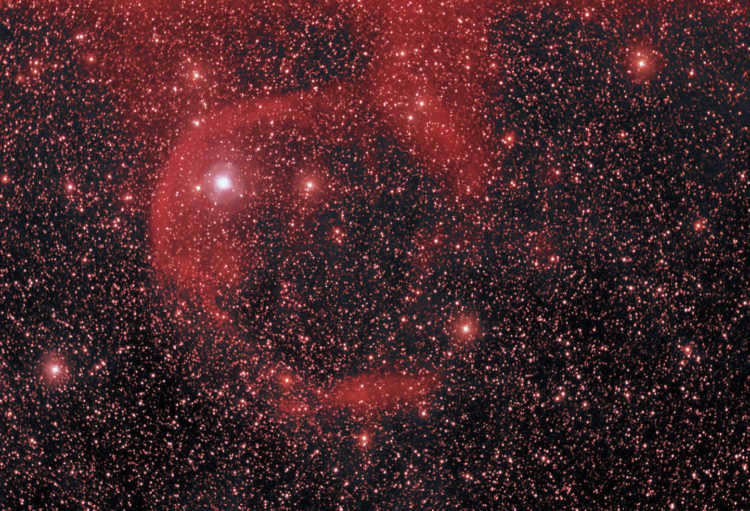
The star can be seen with the naked eye despite being approximately 7,000 light years away. It is the third most luminous star in the constellation Giraffe, following Beta Giraffe and CS Giraffe in first and second place, respectively.
Alnitak in Orion
Alnitak, also known as Orion’s Zeta, is a prominent star situated in the Orion constellation. As the brightest O-class star, it has a visual stellar magnitude of +1.72 (reaching highs of +1.72 and lows of up to +1.79). Alnitak is the leftmost and closest star in Orion’s Belt. Its distance is estimated to be around 800 light years, and it boasts a luminosity equivalent to approximately 35,000 times that of our Sun.
Tau of the Large Canine
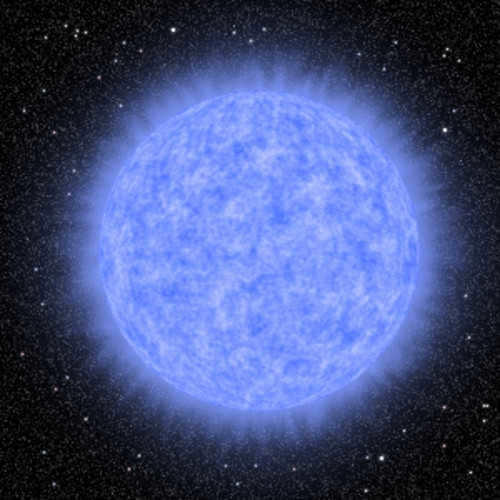
The Big Dog constellation is home to a remarkable celestial phenomenon known as a spectral double star. Among the stars in this cluster, the brightest is Tau, a blue supergiant of spectral class O. When observed from Earth, Tau has an apparent stellar magnitude of +4.37m. The Big Dog Tau system is composed of five components, forming a complex star system. At first glance, Tau appears to be a triple star, with two stars separated by 0.15 angular seconds and having apparent magnitudes of +4.4m and +5.3m, respectively. The third star, which is further away at a distance of 8 angular seconds, has an apparent magnitude of +10m. This outer star orbits the inner pair with a period of 155 days.
Zeta Korma, also known as Naos, is the dominant star in the Korma constellation. This celestial body shines with unparalleled brilliance, surpassing even the most luminous stars in its vicinity. With a luminosity of 870,000 times that of our own Sun, Zeta Korma truly stands out in the cosmic tapestry. Not only is it extraordinarily bright, but it is also remarkably massive, weighing in at a staggering 59 times the mass of our Sun. Its sheer size and power make it a true giant among stars. In terms of its spectral class, Zeta Korma is classified as an O9 star, further cementing its status as a celestial heavyweight.
Video
Regardless of the circumstances, the variation in shades is determined by the surface’s temperature. It is important to acknowledge the inherent connection between energy and the light that is emitted in the natural world.
The highest temperature in the universe: Understanding the Spectral Classes of Stars
The universe is a vast expanse of matter, exhibiting a wide array of phenomena with varying physical properties. Temperature is a crucial characteristic of these phenomena, as it provides insights into the state, structure, and age of celestial bodies. By studying temperature and utilizing theoretical models, scientists can discern important information about the universe.
The range of temperature within different observable components of the universe is extensive. For instance, the Boomerang Nebula holds the record for the lowest recorded temperature, at a mere 1 K. However, what about the highest temperatures known to us and the unique attributes associated with various cosmic objects? Before delving into that, it is essential to understand how scientists determine the temperature of remote celestial bodies.
Spectra and Temperature
Scientists gather all data about distant stars, nebulae, and galaxies by studying their radiation. The temperature of an object is determined by the frequency range of the spectrum at which it emits the most radiation. This frequency is directly proportional to the energy of the radiation. Therefore, the highest temperature in the Universe should correspond to the highest energy level.
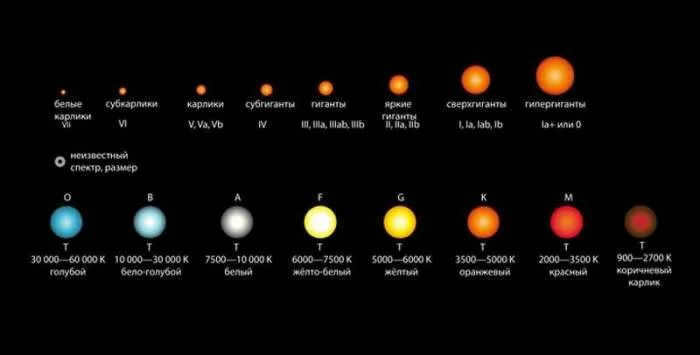
Moreover, the color of stars, along with their other attributes, can undergo alterations due to mutual influence, external conditions, and the stage of their development. In other words, any processes affecting stars inevitably impact and modify their color.
Furthermore, the visual distinction of celestial bodies is contingent upon the sensitivity of human vision and individual perception.
What Causes Stars to Have Different Colors
The color of stars appears to be different due to two main factors.
Firstly, the Earth’s atmosphere plays a role in distorting the true colors of stars. When starlight passes through the atmosphere, it gets scattered and absorbed, resulting in a change in color perception.
Secondly, our perception also influences how we perceive the colors of stars. Human eyes have receptors in the retina that are responsible for color vision. In low light conditions, these receptors are more sensitive to weaker impulses, making it more difficult to distinguish between different colors. This can give the impression that the radiation from stars is white.
Interestingly, the varying colors of stars are not primarily determined by their composition, but rather by their temperature. When a star heats up, certain elements within it become ionized, which affects the way light is emitted and can mask the presence of other elements.
By utilizing spectral analysis, astronomers are able to ascertain the composition and temperature of various objects. This is due to the fact that individual substances have their own unique bandwidths for their atoms. For instance, certain substances allow certain light waves to pass through easily, while others do not. As a result, it becomes possible to determine the chemical composition of a given entity.
Article on the subject: Achieving a flawless tan: 14 guidelines for applying self-tanner to your skin. The correct way to apply self-tanner.
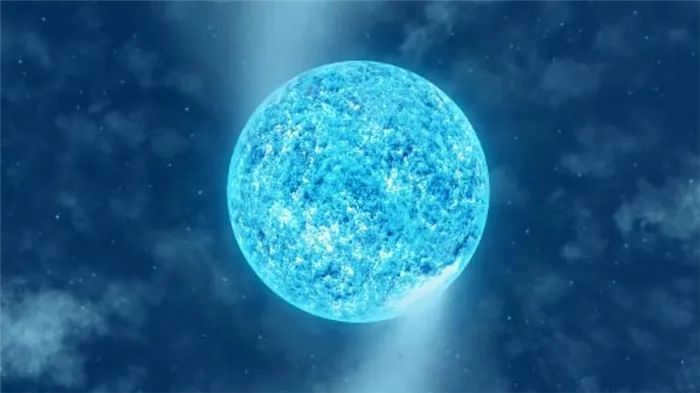
Naos (the hottest star)
The variation in color range is determined by the temperature of the surface. It should be noted that there is always a correlation between energy and the light emitted in nature.
In fact, the degree of heating is influenced by the speed of molecular motion in a substance, which in turn affects the wavelength of light passing through it. When molecules move at a high speed, the surface becomes hotter, resulting in shortened waves. On the other hand, a cold medium is characterized by slower molecular motion and longer waves.
Remember that the Hertzsprung-Russell diagram illustrates the interrelated main features of stars. As demonstrated by the diagram, the temperatures of stars determine their colors in an ascending manner.
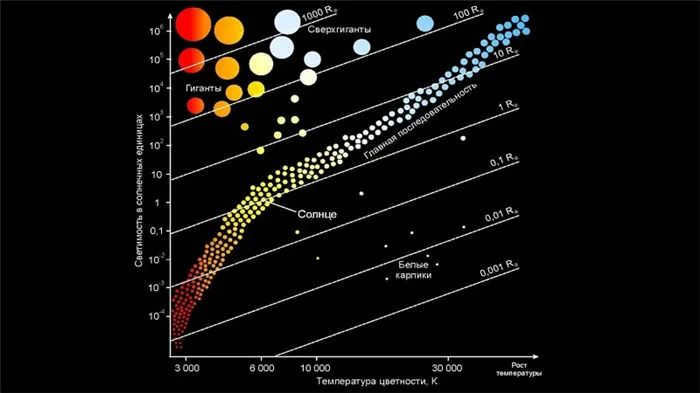
The Hertzsprung-Russell diagram
What color are cool stars?
In actuality, their surface temperature is around 3,000 degrees. Cold stars generally appear in the red spectrum, often as red giants.
What are the hues of the most scorching stars?
In case you were wondering, as the temperature of a celestial body increases, the color tends to shift towards the blue end of the spectrum. The highest temperatures recorded for these stars range from 10,000 to 30,000 degrees Celsius, with some even reaching as high as 100,000 degrees. These exceptionally hot stars are known for their stunning blue hue and are often classified as giants.
First and foremost, the grouping is done based on the principle: from high temperature to low temperature. A total of 7 groups are designated. They are further categorized from 0 to 9, with the hottest ones being in the highest category.
Category O: blue
As mentioned earlier, these stars have the highest temperature (averaging at 300000°C). They most likely form from the fusion of binary stars, resulting in a very bright and massive celestial body that is intensely heated.
Examples of such stars include Rigel, Tau of the Big Dog, Orion’s Zeta, and others.
Scientists believe that these stars are relatively rare in our Universe.
Class B: white and blue
These celestial bodies are generally small in size and have temperatures ranging from 7,000 to 200,000 degrees Celsius. This category includes stars such as Altair, Vega, and Sirius.
G class yellow.
A yellow star has been discovered to have a surface temperature of approximately 60,000 degrees Celsius, and its mass is similar to that of the Sun (0.8-1.4). Notable examples of these stars include Alhita, Dabich, Capella, and others. Additionally, our own Sun is classified as a G2 dwarf star.
Orange dwarfs of class K
Different from the rest, these stars are known for their temperature ranging from 4,000 to 60,000°C. One famous example of an orange star is Aldebaran.
Red dwarfs of class M
In contrast to other stars, their surface is not as hot (30,000°C). Additionally, the outer layer is carbon-rich. It is worth noting that many well-known sites feature this type of star. For instance, Antares and Betelgeuse.
By the way, orange and red stars are the most prevalent in the entire Universe.
Ksenia Sobchak was one of the first celebrities to be seen abroad. When her followers found out about her trip to Turkey, they assumed she was planning to emigrate. However, in her Telegram channel “Bloody Barynya,” Sobchak dismissed these rumors, clarifying that she was simply going on a scheduled vacation with her son.
Scientists have developed scientific laws that establish a connection between color and temperature. As the temperature of an object increases, the amount of energy radiated from its surface also increases and the wavelength of the emitted light becomes shorter. Comparatively, the color blue is associated with a shorter wavelength than red. Therefore, if an object emits light in the blue wavelength range, it can be inferred that it is hotter than an object emitting red light. In stars, the atoms of the glowing gases release particles known as photons. The energy of these photons increases with the temperature of the gas, causing their wavelength to become shorter.
Consequently, the hottest newly formed stars emit light in the blue-white range. As stars consume their nuclear fuel and age, they gradually cool down. This is why older, cooling stars emit light in the red range of the electromagnetic spectrum. Middle-aged stars, like our Sun, emit light in the yellow range.
Our Sun is located about 149 million kilometers away from Earth, which allows us to clearly observe its color. In contrast, other stars are situated at distances of trillions of kilometers or even greater. Even with the aid of powerful telescopes, it is impossible to definitively determine the color of these distant stars. To ascertain this information, scientists employ a specialized apparatus called a spectrograph. By passing starlight through the spectrograph, the spectral composition of the light can be unveiled.
The Winter Triangle can be seen in the bottom right portion of the sky, with Sirius, the bright star, situated in the lower right corner. The constellation of Orion is positioned to the right, and the Pleiades and Hyades clusters are visible in the upper right corner. Additionally, the bright object near the center of the image is Jupiter. This stunning view was captured from the Taganay Nature Park. Photo: I. Sevostyanov.
Sirius
Right Ascension: 06h 45m 09s, Declination: -16°42′58″, Magnitude: -1.46 m
– Sirius, also known as α CMa, is the second-brightest star in the sky and one of the closest to us, located 9 light-years away in the constellation of the Big Dog. It is so luminous that it can sometimes be seen during daylight hours. In the 1800s, astronomers discovered that Sirius is actually a binary star system. The larger component, known as Sirius A, is visible to the naked eye and has a mass twice that of our Sun. The companion star is a white dwarf. Because Sirius is relatively close to our solar system, its motion across the sky was one of the first to be measured by Edmond Halley in the early 18th century. This proper motion, or movement on the celestial sphere, provided evidence against the prevailing geocentric model of the universe. Further observations revealed that Sirius had shifted by half a degree compared to its coordinates in Ptolemy’s catalog from the 2nd century AD. Similar results were found for other nearby stars. In the mid-19th century, astronomers used the Doppler shift of spectral lines to determine the radial component of Sirius’s velocity, whether it is moving toward or away from us. This technique is now widely used to study various celestial objects, including exoplanets.
The right ascension is 07h 39m 18s, the declination is +05°13′30″, and the magnitude is +0.34 m.
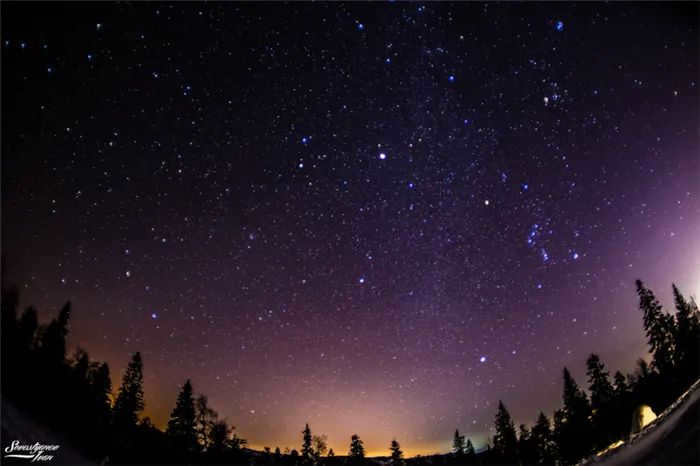
The Winter Triangle can be seen in the bottom right corner of the image, with the bright star Sirius located in the lower right. Orion, the constellation, is visible to the right, while the Pleiades and Hyades clusters can be seen in the upper right corner. The object in the center of the image is Jupiter. This stunning view was captured from Taganay Nature Park by photographer I. Sevostyanov.
Sirius is the brightest star in the constellation of Canis Minor, also known as the Small Dog. It is the eighth brightest star in the night sky and is located approximately 11 light-years away. The Sirius star system is a double star, with the main component being a white-yellow subgiant of class F5. It is at the final stage of evolution before it expands and transforms into a red giant. The paired component is a white dwarf, which is difficult to see without a powerful telescope.
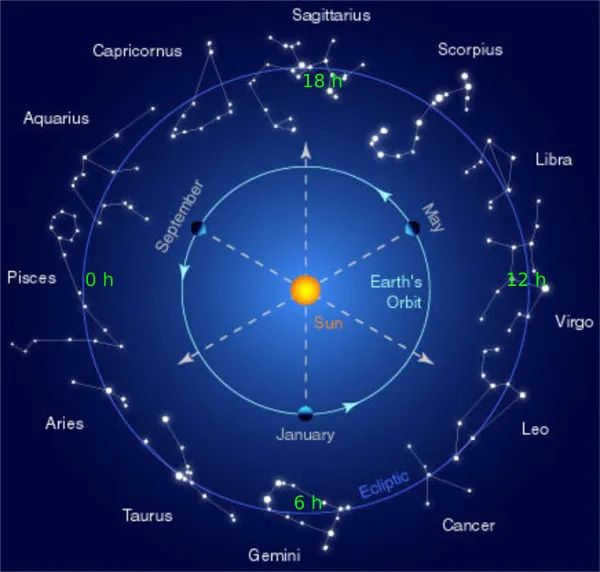
Assessing the object’s visibility based on different seasons.
Betelgeuse, Sirius, and Procyon form a well-known asterism known as the Winter Triangle. It is notable for its position along the Milky Way, with the stars aligning along its “banks” in a pattern of bright stars that has already been described. The name of the asterism indicates the best time to observe it in the night sky. This can also be easily determined from the celestial coordinates of the objects. Let us review how this is done using a simple example. More information about the system of celestial coordinates can be found in the previous article (“Astronomy with binoculars…”). All three stars are located near the celestial equator, meaning they have small declination (Dec) values close to zero. This indicates that the stars spend half of the day above the horizon and half below it. The value of their second coordinate, right ascension (RA), which is analogous to Earth’s longitude, ranges from 6 to 8 hours, similar to the zodiacal constellation Gemini. The best time to observe these stars is when they ascend after sunset, ideally when the Sun is on the opposite side of the celestial equator, resulting in a right ascension of 6+12=18 hours. It is worth noting that the Sun has a right ascension of 0 hours on the day of the vernal equinox (March 22 or 23), and throughout the year, it moves in a circle in the sky, increasing by approximately two hours each month as it passes through the constellations of the Zodiac. The value of 18 hours corresponds to three-quarters of the circle, which aligns with the winter solstice at the end of December. Therefore, the optimal conditions for observing the Winter Triangle throughout the night occur towards the end of fall and throughout the winter months. Similar calculations can be performed for the other two star triangles, which will be discussed later. Instead of the Winter Triangle, one can also consider the Winter Hexagon or circle in various configurations, including neighboring characteristic stars such as Rigel, Aldebaran, Capella, and others. As can be seen, they all appear in the vicinity of the arc of the Milky Way.
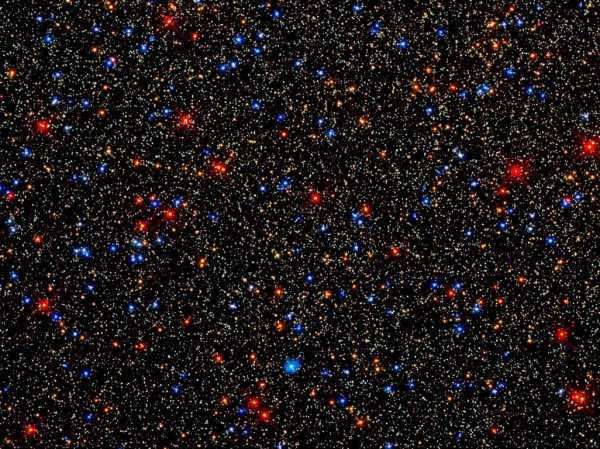
The range of colors exhibited by stars is vast. Stars can appear blue, white, yellow, or red, and these hues are distinguishable despite the Earth’s atmospheric distortion. However, the source of a star’s color remains a mystery.
The origin of star color
The discovery of the connection between a star’s color and its surface temperature has proven invaluable for astronomers. By examining the color of a star, they can determine its temperature. This phenomenon is rooted in the relationship between the energy of matter and the color of the light it emits.
Chances are, you’ve already noticed this phenomenon yourself. The filament of low-power 30-watt light bulbs emits an orange glow, and when the voltage from the electrical outlet decreases, the filament barely emits a faint red glow. On the other hand, higher wattage bulbs emit a yellow or even white glow. And if you were to observe a welding electrode in action or a quartz lamp, you would notice that they emit a blue glow. However, it’s important to note that you should never directly look at these sources of light, as their energy is so intense that it can easily cause damage to your retina.
Resources about the subject
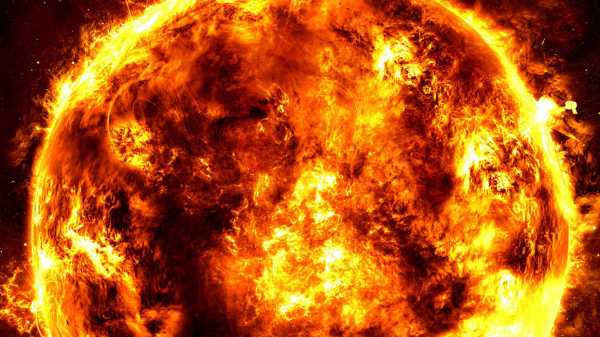
Star temperature
As a result, the closer an object’s temperature is to blue, the hotter it is, while the closer it is to dark red, the colder it is. Stars are no different, as this same principle applies to them. The impact of a star’s composition on its color is minimal, as the temperature can cause certain elements to become ionized and thus hidden.
However, by analyzing the color spectrum of a star’s radiation, we can determine its composition. Each substance has its own unique range of wavelengths. Some colors of light can pass through these atoms without obstruction, while others are blocked. It is by studying these blocked ranges of light that scientists can identify the chemical elements present.
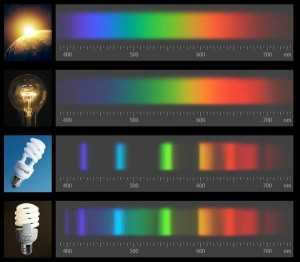
The emission spectra of various light sources
The process of “coloring” stars
What is the scientific explanation for this occurrence? Temperature can be measured by the speed at which molecules within an object move – the higher the temperature, the faster the molecules move. This affects the length of light waves that pass through the object. A hot environment causes the wavelengths to shorten, while a cold environment causes them to lengthen. The visible color of a beam of light is determined by its wavelength: shorter wavelengths produce blue hues, while longer wavelengths produce red hues. White color is achieved when multiple wavelengths of light overlap.
The hue of a celestial body is a significant factor in multiple celestial classification systems simultaneously. On its own, it serves as the primary parameter for ascertaining the spectral category of a celestial entity. Due to its association with temperature, it is graphed on one of the axes of the Hertzsprung-Russell diagram. This diagram also serves as a means to deduce the brightness, mass, and age of a celestial body, thereby rendering it a valuable and visually appealing source of information regarding celestial entities.
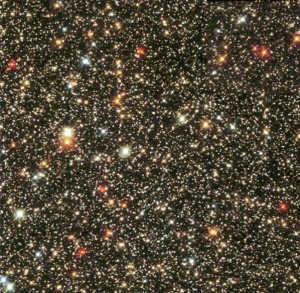
| Star | Name | Color | |
| α of Ascendant | Capella | yellow | |
| α of Volopassus | Arcturus | orange-yellow | |
| α of the Lesser Dog | Sirius | bluish white | |
| μ Cepheus | “Pomegranate Star | dark red | |
| α Lyra | Vega | bluish white | |
| α Scorpio | Antares | red | |
| α Taurus | Aldebaran | orange | |
Spectral classes
The classification of stars into spectral classes is a way of categorizing them based on their temperatures and spectra. This system was developed by astronomers to better understand and study the different types of stars in the universe.
The spectral classes are labeled with letters, starting with the hottest stars classified as class O and ending with the coolest stars classified as class M. Each class is then subdivided into smaller categories, indicated by numbers from 0 to 9. The subclasses represent a finer distinction in temperature within each spectral class.
By studying the spectra of stars, astronomers can learn valuable information about their physical properties, such as their temperature, luminosity, and chemical composition. This information helps scientists to understand how stars form, evolve, and eventually die.
Furthermore, the spectral classification system provides a way to compare different stars and identify similarities and differences between them. It allows astronomers to develop theories and models about stellar evolution and understand the diversity of stars in the universe.
In conclusion, the spectral classification of stars is an essential tool in astronomy. It helps scientists organize and study the vast number of stars in the universe and gain insights into their nature and behavior.
Stellar magnitudes and the measurement of stellar distances
The brightness of a star is estimated using stellar magnitudes. To put it simply, a star with a first magnitude appears almost twice as bright as a star with a second magnitude, which in turn appears the same number of times brighter than a star with a third magnitude, and so on. Precise measurements have shown that a difference of one star magnitude corresponds to a brightness ratio of 2.512:1. This ratio is noticeable to the human eye and brain as a significant change in brightness. It is helpful to remember that a first magnitude star is exactly 100 times brighter than a sixth magnitude star. It is also useful to know the stellar magnitudes of some of the brightest stars (see table). As shown in the table, the brightest stars have negative stellar magnitudes. In practical terms, it is often necessary to know the exact stellar magnitudes of fainter stars, particularly in specific areas of the night sky. Such information is typically provided on maps that cover standardized sections of the sky in constellations like Ursa Minor, Crux, and the Pleiades.
Despite the numerous advancements in modern technology, determining the distances to stars remains one of the most challenging tasks in astronomy. The vastness of these distances makes conventional units such as kilometers or astronomical units (a.e.) inadequate for estimation. Instead, astronomers employ distance measures like the light-year (ly) and the more commonly used parsec (pc). A parsec is the distance at which the radius of the Earth’s orbit, equivalent to 1 a.e., is observed at an angle of 1″ (second of arc). In other words, 1 pc = 3.216 ly = 206265 a.e. = 3.1 – 10″ km. For galactic and extragalactic astronomy, even larger distance units are utilized: kiloparsec (1 kpc = 1000 pc) and megaparsec (1 Mpc = 1,000,000 pc).





